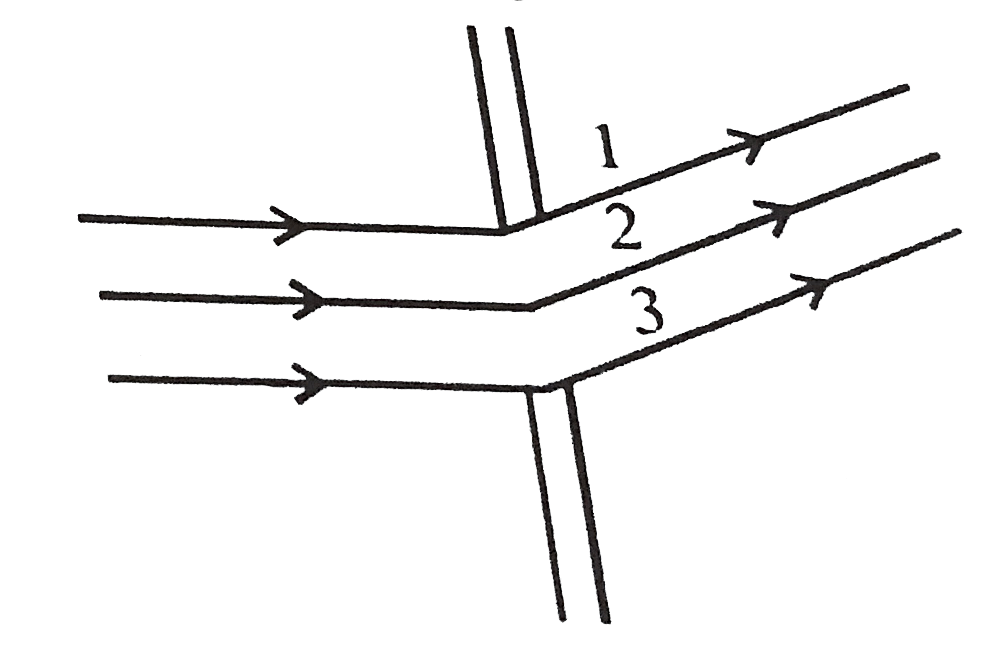The adjacent figure shows Fraunhoffer’s diffraction due to a single slit. If first minimum is obtained in the direction shown, then the path difference between rays 1 and 3 is

0
λ/4
λ/2
λ
Step by step video & image solution for The adjacent figure shows Fraunhoffer’s diffraction due to a single slit. If first minimum is obtained in the direction shown, then the path difference between rays 1 and 3 is by Physics experts to help you in doubts & scoring excellent marks in Class 11 exams.
Topper's Solved these Questions
Similar Questions
Knowledge Check
- Question 1 - Select One
The direction of the first secondary maximum in the fraunhoffer diffraction pattern at a single slit is given by (a is the width of the slit)
Aasinθ=λ2Bacosθ=3λ2Casinθ=λDasinθ=3λ2 - Question 2 - Select One
Parallel monochromatic beam of light is incident normally on a narrow slit. A diffraction pattern is formed on a screen placed perpendicular to the direction of the incident beam. At the first minimum of the diffraction pattern, the phase difference between the rays coming from the two edges of slit is
AzeroBπCπ2D2π - Question 3 - Select One
Parallel monochromatic beam of light is incident normally on a narrow slit. A diffraction pattern is formed on a screen placed perpendicular to the direction of the incident beam. At the first minimum of the diffraction pattern, the phase difference between the rays coming from the two edges of slit is
AzeroBπCπ2D2π
What is the condition for first minimum in case of diffraction due to a single slit ?
View SolutionA parallel monochromatic beam of light is incident normally on a narrow slit. A diffraction pattern is formed on a screen placed perpendicular to the direction of the incident beam. At the first minimum of the diffraction pattern, the phase difference between the rays coming from the two edges of the slit is
View SolutionFor nth order maxima in Fraunhoffer diffraction by a single slit, aperature, the value of path difference should be
View SolutionA parallel monochromatic beam of light is incident normally on a narrow slit. A diffraction patten is formed on a screen placed perpendicular to the direction of incident beam. At the first maximum of the diffraction pattern the phase difference between the rays coming from the edges of the slit is
View SolutionIn a fraunhofer's diffraction obtained by a single slit aperture, the value of path difference for nth order of minima is-
View Solution


